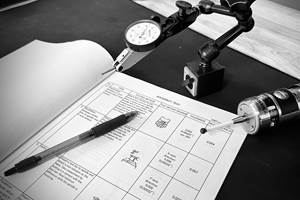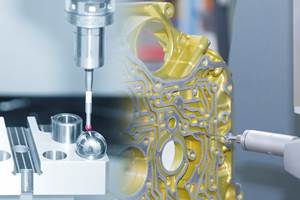Sizing up the Digital Optical Comparator
A digital optical comparator uses a CAD file instead of a template or overlay film. More importantly, the digital comparator not only measures dimensions, but it also actively compares the measurements with nominal values, thus making it truly a gage for accepting or rejecting a part.
Share





By magnifying the image of a workpiece and projecting that image against a template that magnifies a profile of the part’s design, the traditional optical comparator magnifies the ability of the human eye to detect critical deviations. Mismatches between the projected workpiece image and the template make these deviations more obvious, enabling the user to judge whether the workpiece is acceptable.
Related Content
Using Digital Tap Testing to Measure Machining Dynamics
Tool-toolholder-spindle-machine combinations each have a unique vibration response. We can measure the response by tap testing, but we can also model it.
Read More4 Ways to Establish Machine Accuracy
Understanding all the things that contribute to a machine’s full potential accuracy will inform what to prioritize when fine-tuning the machine.
Read MoreProcess Control — Leveraging Machine Shop Connectivity in Real Time
Renishaw Central, the company’s new end-to-end process control software, offers a new methodology for producing families of parts through actionable data.
Read MoreRethink Quality Control to Increase Productivity, Decrease Scrap
Verifying parts is essential to documenting quality, and there are a few best practices that can make the quality control process more efficient.
Read MoreRead Next
Machine Shop MBA
Making Chips and 91±¬ÁĎÍř are teaming up for a new podcast series called Machine Shop MBA—designed to help manufacturers measure their success against the industry’s best. Through the lens of the 91±¬ÁĎÍř benchmarking program, the series explores the KPIs that set high-performing shops apart, from machine utilization and first-pass yield to employee engagement and revenue per employee.
Read MoreAMRs Are Moving Into Manufacturing: 4 Considerations for Implementation
AMRs can provide a flexible, easy-to-use automation platform so long as manufacturers choose a suitable task and prepare their facilities.
Read More


















